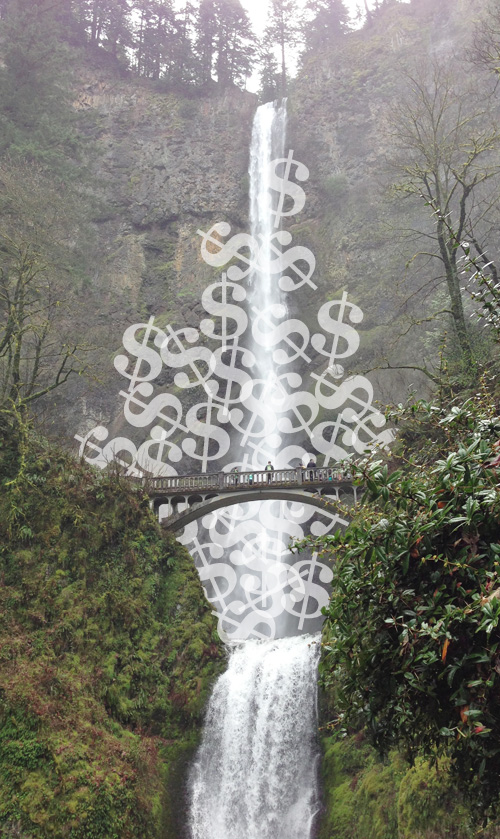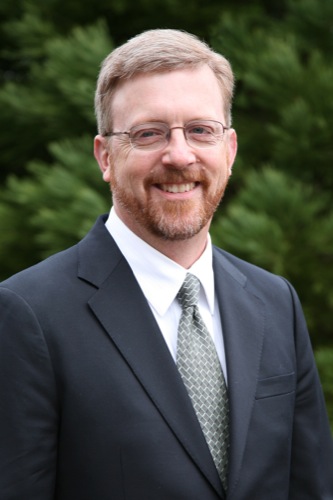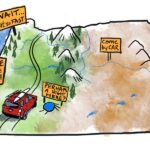 BY LINDA BAKER | OB EDITOR
BY LINDA BAKER | OB EDITOR
A conversation with Travel Oregon CEO Todd Davidson.
 BY LINDA BAKER | OB EDITOR
BY LINDA BAKER | OB EDITOR
In January 2011, Travel Oregon chief executive officer Todd Davidson was appointed by the U.S. Secretary of Commerce to serve as the Chair of the Travel and Tourism Advisory Board. Davidson, who recently finished his term, chatted with Oregon Business about local and national tourism initiatives and synergies between tourism and economic development.
Here are a few highlights from the conversation:
OB: The most recent U.S. Department of Commerce Travel and Tourism forecast predicts a four percent average annual growth in tourism through 2018. What kind of growth can we expect for Oregon tourism?
Davidson: Oregon should parallel or exceed the annual average rate of growth. I say that with certain level of confidence because at Travel Oregon we have remained aggressive in our marketing programs, domestically and internationally we are in more markets than we ever have been. We’re getting into some markets for the first time ever. In 2013, we made our first forays into Brazil and India. A few years those markets were not on our radar screen. But there is research indicating interest in those markets.
In Oregon, the rate of growth for international visitations has exceeded the national average. The current rate of growth in terms of demand for lodging in Oregon is exceeding the regional and national average. So I’m very optimistic about the continued growth of travel.
OB: Last year, President Obama launched the National Travel and Tourism Strategy, which set a goal of welcoming 100 million international visitors to the U.S. by 2021. Talk about Oregon’s international marketing strategy.
Davidson: Let me give you some context. Between 2000 and 2010 international visitation globally grew by more 60 million annual travelers. Yet international travel to the United States declined nearly a third. Part of the challenge is we had no national tourism office. Other countries were investing very heavily in promoting countries as tourist destinations. So in 2010 Congress passed the Travel Promotion Act; that’s what set up Brand USA. Their sole charge is to promote the United States internationally.
Our success has been driven by the fact that Brand USA enhances America’s presence in those markets and creates opportunities for Travel Oregon to come in and meet through the Brand USA pavilion held in key travel trade shows. This is not direct consumer marketing. We’re doing B2B marketing encouraging tour operators to create itineraries and packages that can be bought by travelers.
As we look at the industry moving forward, we see continued focus on international travel, continued expansion of domestic advertising programs, and greater and greater alignment throughout the process — with Brand USA and with our partners from the federal level to state level, aligning messages, aligning advertising campaigns and leveraging budgets.
OB: The Travel and Tourism board identified several priorities to help boost tourism, including improvements to visa and entry process.
Davidson: A couple of years ago, we were experiencing situations where visitors from China, from Brazil, were having to wait 150 days just to get scheduled for an interview to apply for a visa to travel to the U.S. the presidents. We now have visa wait times down to two days. We are seeing increased visitation from these countries as a result.
The choke point now is visitors arriving in the U.S. in some airports, and the lines are very long; the average wait time is two-three hours to clear customers. The industry believes the average wait time should be no more than 30 minutes.
There are steps in place to do that. One is ‘global entry reciprocity’: the idea that other country have trusted traveler programs and subsequently visitors from these countries can move through lines more quickly. The other piece is we need more officers at border protection. We need between 3,000 and 3,500 more officers at primary border airports.
OB: The Tourism Board also called for greater investment in infrastructure. Does Travel Oregon lobby on behalf of infrastructure projects such as the Columbia River Crossing?
Davidson: If Travel Oregon not in conversation about the CRC then our partners at Travel Portland are. We want to make sure travel and tourism are present. If there are going to be tolls — if visitors are crossing that bridge we want tolls to be as user friendly as we can make it.
To meet that 100 million goal we also need to expand counts at gateway airports. One way to do that is technology. Currently many of our flights are on radar; if they flew using GPS systems the flight times could be abbreviated, there would be fewer emissions and less gas consumed because of ways planes are able to fly. A next generation system is being piloted in a few airports around the country; this is something that the industry feels strongly about.
OB: Describe a few memorable moments serving on the Travel and Tourism Board.
Davidson: It was incredibly humbling to serve with other representatives of the travel and tourism industry: small business people, heads of major multi-national corporations, the CEOs of airlines and hotel chains but also independent operators — really representing the depth and breadth of industry. We also have ex officios from Secretary of State, Department of Transportation and Department of Homeland Security. They really want to hear from the industry. It’s such an affirmation of our work. We have the opportunity to really help drive policy.
One high point was President Obama came to the inaugural meeting in January 2012. It was such an affirming start … having the opportunity to spend a few minutes with him, to see his grasp of how this industry is a leading export for the country.
Twenty seven percent of all export growth that occurred last year came from travel and tourism. It’s pretty amazing since travel and tourism only represent 8% of all exports. The industry is really driving a lot of the economic recovery.
OB: In Oregon, policy makers are also paying more attention to tourism as an economic development tool.
Davidson: There is solid recognition from the governor’s office and growing awareness from the business community. There is an appreciation of the nexus between travel Oregon and economic development. People come here as visitors and then have an express desire to relocate their business. We’re seeing that and an awareness of our partners in economic development who are interested in aligning with us.
I believe in the power of travel and tourism to create jobs for Oregonians. And it is great to see Oregon business leaders really embracing the power of travel and tourism. 


 BY LINDA BAKER | OB EDITOR
BY LINDA BAKER | OB EDITOR
